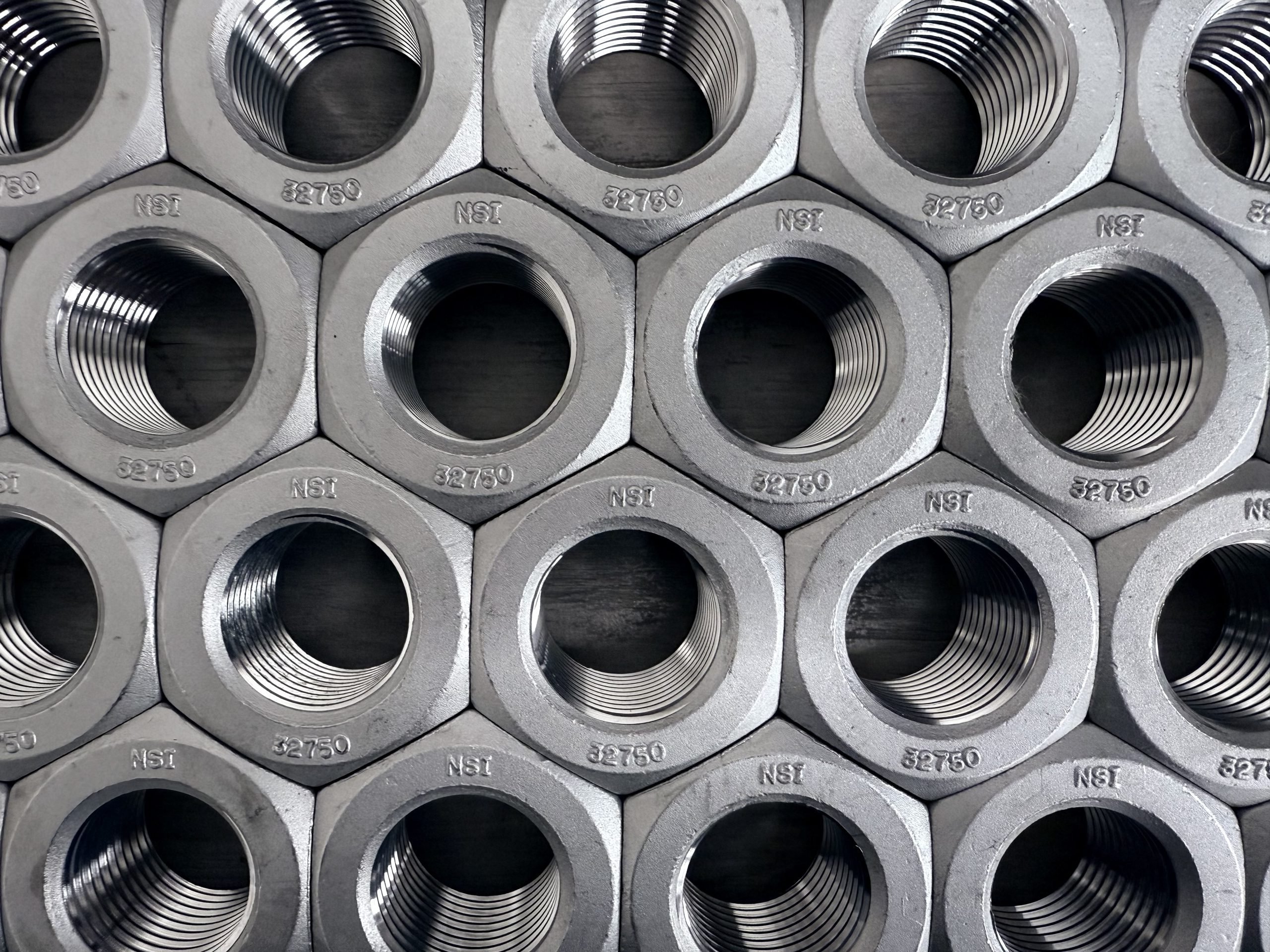Specifications
- 304 Bolts: ASTM A193 Grade B8 Class 2
- 304 Nuts: ASTM A194 Grade 8 Class 2

The advantage of strain-hardened stainless fasteners is greater strength with equivalent corrosion resistance. Strain-hardened parts have the same chemistry as their non-strain-hardened counterparts. Generally, a strain-hardened stainless bolt has the same strength as a Grade 5 steel bolt. Cold working a larger diameter bar into a smaller diameter bar is the usual method used to obtain the strain-hardened properties. Excessive heat will destroy the strain-hardening. 304 and 316 Stainless are the two most common materials that are available, which have undergone this process. Other austenitic stainless can be subjected to strain hardening, however, the raw material is subject to limited availability.
If your question isn’t answered below, download the complete technical data sheet here. This technical data is specifically related to 304 stainless material produced by rolled alloys. If you require this specific material, you must request it at the time of quotation. For more information on this mill, please visit the website of Rolled Alloys.
| Density | 0.285 lb/in3 |
| Melting Range | 2550-2590°F |
| Poisson Ratio | 0.3 |
| Electrical Resistivity | 28.3 µΩ • in |
| Coefficient of Thermal Expansion (68°F – 212°F) | 9.2 µin/(in •°F) |
| Thermal Conductivity (212°F) | 9.4 BTU/(hr•ft•°F) |
| Modulus of Elasticity (68°F) | 29 •106 psi |
| Temperature, °F | Ultimate Tensile Strength, ksi | 0.2% Yield Strength, ksi | Charpy Impact V-notch, ft-lbs |
|---|---|---|---|
| -425 | 250 | 100 | 85 |
| -320 | 230 | 70 | 85 |
| -100 | 150 | 50 | – |
| 70 | 90 | 35 | 150 |
| 400 | 70 | 23 | – |
| 800 | 66 | 19 | – |
| 1200 | 48 | 15.5 | 13 |
| 1500 | 23 | 13 | – |
Check out our sample products for 304 material.
